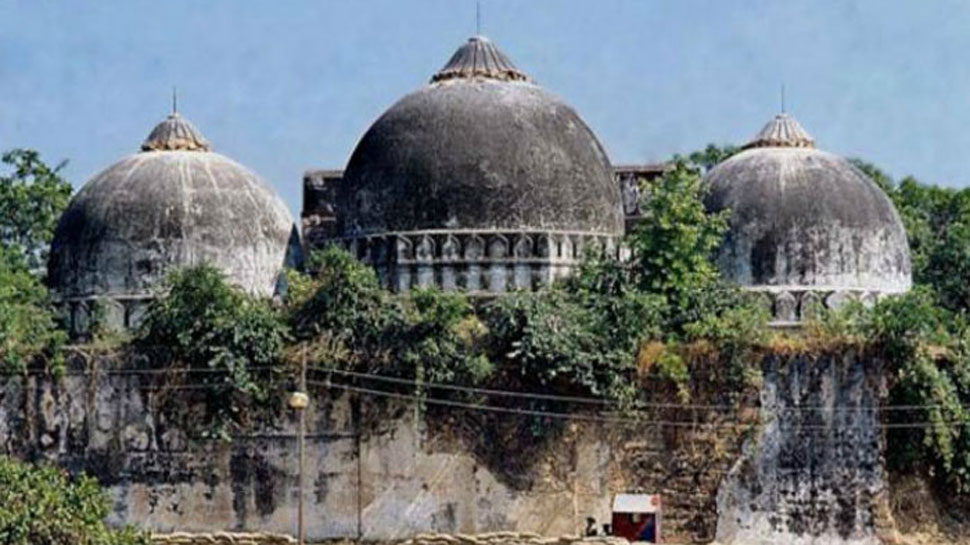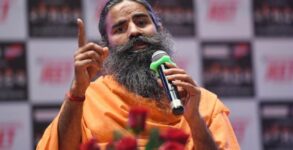The movement for a grand Ram temple in Ayodhya over the years has seen many key players from time to time carrying forward the campaign. The known faces are the one that have received their share of fame and publicity but there are some who remain in the realms of oblivion.
One of the initiators of the temple movement was Mahant Raghubar Das who filed a petition in the Faizabad Court for permission to build a Ram temple adjacent to the Babri mosque.
Several saints in Ayodhya still give credit to Mahant Raghubar Das for initiating the legal battle that is culminating in the construction of the Ram temple. However, there are many who prefer that he remains unhonoured and unsung.
Then there was Gopal Singh Visharad who filed the first case on the temple dispute in Independent India in 1950.
Visharad was a resident of Balrampur district and the head of the Hindu Mahasabha in the district. He had been stopped by the police from going to the Ram Janmabhoomi and he submitted a petition seeking unhindered access to Hindus to the Janambhoomi.
K.K. Nair, a 1930 batch IAS officer, was district magistrate of Faizabad when the idol of Ram Lalla was placed in the disputed complex on the night of December 23, 1949.
Nair refused to get the idol removed even though he was asked to do so by the then Prime Minister Pandit Jawaharlal Nehru and then Uttar Pradesh Chief Minister Govind Ballabh Pant. Nair had told his political bosses that they would have to remove him before the idol could be removed.
A resident of Alleppey in Kerala, Nair opted for voluntary retirement in 1952 and was elected to the fourth Lok Sabha in 1967 from Bahraich on a Jan Sangh ticket. His wife, Shankuntala Nair was also elected twice from Kaiserganj Lok Sabha seat.
In 1949, Mahant Digvijay Nath, the chief priest of the Goraksh temple in Gorakhpur led the temple movement after the idol was placed in the disputed complex. The Mahant brought all saints and seers on one platform and drafted the blueprint for the movement which later spread across the country.
After his demise in 1969, his successor Mahant Avaidyanath played an important role in the temple movement. Mahant Avaidyanath’s successor is present Chief Minister Yogi Adityanath, who has also played a proactive role in the temple movement.
Then there are commoners, forgotten face of the Ayodhya movement. One such is ‘kar sevak’ Suresh Baghel, a resident of Vrindavan in Mathura. He made the first attempt to bring down the Babri mosque and faced police action, courted arrest and made several rounds of courts.
Baghel, who now works in a private company on a salary of Rs 6,000 per month, refuses to even talk on the temple issue. “Now no one remembers me and I remember nothing. Please leave me alone,” he said when attempts were made to contact him.
In the 1990s when the temple movement gained momentum, leading to the demolition of the Babri mosque, the then VHP leader Ashok Singhal became the chief architect of Hindutva.
His slogan “Ek dhakka aur do, babri masjid tod do”, created a frenzy and mobilised Hindus like never before. Singhal passed away in 2015 and did not live to see the Ram temple being constructed.
Parveen Togadia, then a senior VHP leader, was also known for his proactive role in the temple movement. He lost his clout after the demise of Ashok Singhal.
L.K. Advani and Dr Murli Manohar Joshi, then top BJP leaders, also played key role in the temple movement, giving it the much-needed political push with their party.
The BJP’s rise in India politics is directly linked to the temple movement and the role played by these two leaders.
Vinay Katiyar, a firebrand Hindu leader, was also the founder of the Bajrang Dal that gave a cutting edge to the temple movement. Katiyar went on to become a three-term MP from Ayodhya but later slid into political oblivion.
Former Uttar Pradesh Chief Minister Kalyan Singh was another important player in the temple movement. He was UP chief minister when the Babri mosque was demolished and his government was dismissed the same day. Kalyan Singh was convicted for contempt of court because he had promised to protect the mosque.
Uma Bharti and Sadhvi Rithambhara led the women brigade in the temple movement. Both were known for their fiery speeches. Cassettes of Rithambhara’s fiery speeches were sold at a premium in the market and were enough to ignite communal violence.
Talking to IANS, a senior saint of Ayodhya who did not wish to be named, said, ‘All these people have contributed to the temple movement which has reached a stage where the temple construction is beginning. I feel we should have made it a point to invite all those who are still alive and should have felicitated them.”
–IANS

















